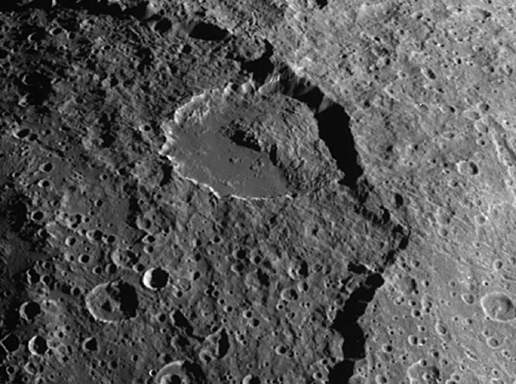Huge ice formations on Iapetus, Saturn’s third largest moon, are helping geologists understand landslides and earthquakes in other parts of the solar system.
“Not only is the moon out-of-round, but the giant impact basins are very deep, and there’s this great mountain ridge that’s 20 kilometers (12 miles) high, far higher than Mount Everest,” said study co-author William McKinnon at Washington University in St. Louis (WUSTL) in a press release.
The avalanches on Iapetus are unusual because they can flow, sometimes traveling up to 30 times farther than the distance they fall. This suggests there is a mechanism that reduces friction, such as an air cushion or lubrication by water.
Here on Earth, the equivalent is a long-runout rock landslide or sturzstrom. Most landslides travel less than twice the distance horizontally that they drop.
“The landslides on Iapetus are a planet-scale experiment that we cannot do in a laboratory or observe on Earth,” said study co-author Kelsi Singer, also at WUSTL, in the release.
“They give us examples of giant landslides in ice, instead of rock, with a different gravity, and no atmosphere. So any theory of long runout landslides on Earth must also work for avalanches on Iapetus.”
Using images from NASA’s Cassini spacecraft, Singer identified 30 massive ice avalanches on Iapetus. Although their heights and runouts are not consistent with some of the most popular hypotheses, they cannot be excluded.
The scientists wondered whether rapid motion makes ice slippery, and whether this also applies to rock.
“If you had some kind of quick movement, whether it was a landslide or the slip along a fault, the same kind of thing could happen,” Singer said.
When faults move during an earthquake, they might be lubricated by flash-heating—friction heats up tiny contact points on their surfaces, called asperities, as the rocks slide past each other.
Above a critical speed, the asperities would be flash-heated to temperatures high enough to melt rock. This could explain high slip rates and large sliding displacements seen in earthquakes.
In support of this theory, rocks that seem to have undergone frictional melting, called frictionites or pseudotachylites, have been found along faults and associated with some rockslides.
The study was published in Nature Geoscience on July 29.
The Epoch Times publishes in 35 countries and in 19 languages. Subscribe to our e-newsletter.





